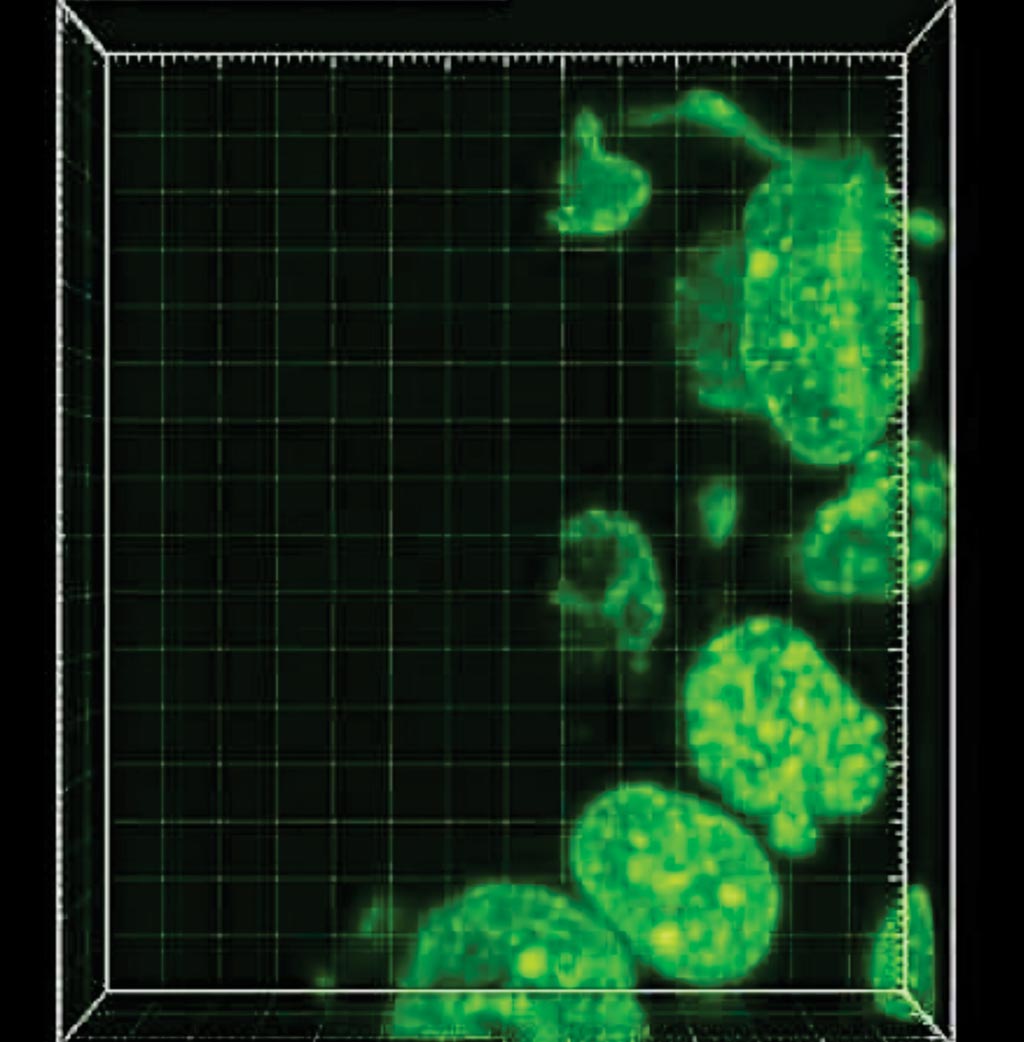Microscopy Technique Enables More Informative Biopsies
By LabMedica International staff writers
Posted on 01 Aug 2017
Expansion microscopy (ExM), is a method for improving the resolution of light microscopy by physically expanding a specimen, but has not been applied to clinical tissue samples. In this ExM method a tissue sample is expanded to 100 times its original volume before imaging it.Posted on 01 Aug 2017
This expansion allows scientists to see features with a conventional light microscope that ordinarily could be seen only with an expensive, high-resolution electron microscope. It also reveals additional molecular information that the electron microscope cannot provide.

Image: The expansion pathology (ExPath) technique reveals expanded breast cancer tissue with nuclei visualized in 3D (Photo courtesy of the Ludwig Institute for Cancer Research).
Scientists at Massachusetts Institute of Technology (Cambridge, MA, USA) and their colleagues developed a clinically optimized form of ExM that supports nanoscale imaging of human tissue specimens that have been fixed with formalin, embedded in paraffin, stained with hematoxylin and eosin, and/or fresh frozen. The method, which they call expansion pathology (ExPath), converts clinical samples into an ExM-compatible state, then applies an ExM protocol with protein anchoring and mechanical homogenization steps optimized for clinical samples.
The team tested this approach on tissue samples from patients with early-stage breast lesions. One way to predict whether these lesions will become malignant is to evaluate the appearance of the cells’ nuclei. Benign lesions with atypical nuclei have about a fivefold higher probability of progressing to cancer than those with typical nuclei. However, studies have revealed significant discrepancies between the assessments of nuclear atypia performed by different pathologists, which can potentially lead to an inaccurate diagnosis and unnecessary surgery. ExPath enables ~70-nm-resolution imaging of diverse biomolecules in intact tissues using conventional diffraction-limited microscopes and standard antibody and fluorescent DNA in situ hybridization reagents.
After expanding the tissue samples, the scientists analyzed them with a machine learning algorithm that can rate the nuclei based on dozens of features, including orientation, diameter, and how much they deviate from true circularity. This algorithm was able to distinguish between lesions that were likely to become invasive and those that were not, with an accuracy of 93% on expanded samples compared to only 71% on the pre-expanded tissue. They also analyzed kidney tissue samples from patients with nephrotic syndrome and when they showed the images of the expanded tissue samples to a group of scientists that included pathologists and non-pathologists, the group was able to identify the diseased tissue with 90% accuracy overall, compared to only 65% accuracy with unexpanded tissue samples.
Edward S. Boyden, PhD, a professor of Biological Engineering and co-senior author of the study, said, “Now you can diagnose nephrotic kidney disease without needing an electron microscope, a very expensive machine. You can do it with a few chemicals and a light microscope. If you can expand a tissue by one-hundredfold in volume, all other things being equal, you’re getting 100 times the information.” The study was published on July 17, 2017, in the journal Nature Biotechnology.
Related Links:
Massachusetts Institute of Technology














